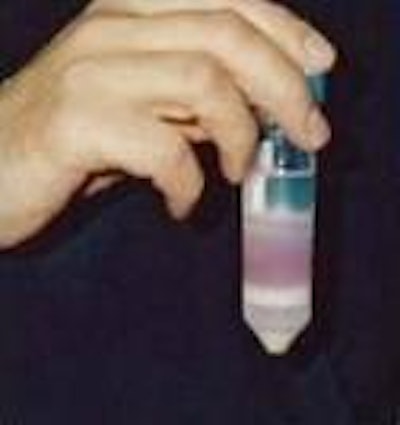
First results have been reported of a new technique that promises extra help in stopping the introduction of the PRRS virus into a herd through boar semen purchased for use in artificial insemination. Unlike the protection methods that rely on diagnostic testing of semen samples, it has the potential to work against both known and unknown viruses that may be present at an AI stud.
The technique is known simply as semen washing or semen disinfection, explained Dr Meritxell Donadeu, veterinary manager for breeding company PIC Europe, addressing a pig science conference arranged by the University of Nottingham in the UK. It has similarities with the more established procedure used for the removal of viruses from pig embryos by employing proteolytic enzymes. Essentially, it processes semen mechanically (using density gradient centrifugation) and enzymatically to separate live, healthy sperm cells not only from any unhealthy spermatozoa affected by viruses, but also from phagocytes present in semen that have been produced by the body to defend against foreign microbes.
Its application to semen from AI boars is relatively new and not commercially available. But the basic principle is already applied in human medicine to prevent the transfer of HIV infections, as well as in research into animal fertility. The patented technique was developed by Dr Naida Loskutoff at the Henry Doorly Zoo in Omaha, Nebraska, USA.
Test on contaminated ejaculate
An initial small trial performed by PIC and the zoo's researchers in the USA tested the washing method on the ejaculates of 8 boars that had been deliberately infected with PRRS. Repeated testing of samples yielded a 95.7% success rate in removing the PRRS virus from contaminated semen, according to a cross-check by polymerase chain reaction (PCR) for evidence of residual virus RNA. The only failures related to ejaculates from the same boar and may have reflected a high level of virus or technical issues such as overloading the gradients.
The next testing set out to determine if the washing protocol affected semen quality. A pilot study examined 11 sows from a company herd in Scotland that had been inseminated with semen from PRRS-free boars, this semen having been processed with the washing technique. The results showed no reduced fertility, with a farrowing rate of over 90% and adequate numbers of pigs born alive per litter.
For a follow-up, again using PRRS-negative semen, testing compared single-sire matings in which half of each ejaculate had been washed. Inseminations involved 75 sows on washed semen and 47 on normal AI as the Table shows. Over 95% of the sows in both groups went on to farrow and they gave litters of more than 12 piglets each.
It is still early to be predicting a bright future for the semen washing process, Dr Donadeu commented. But enough is known about it already to recognise its potential value as a weapon in the battle to beat PRRS. Although processing may be too slow and costly for everyday use in commercial pig AI, there are obvious instances where such drawbacks pale into insignificance compared with the extra guarantee of obtaining virus-free semen. PIGI

















